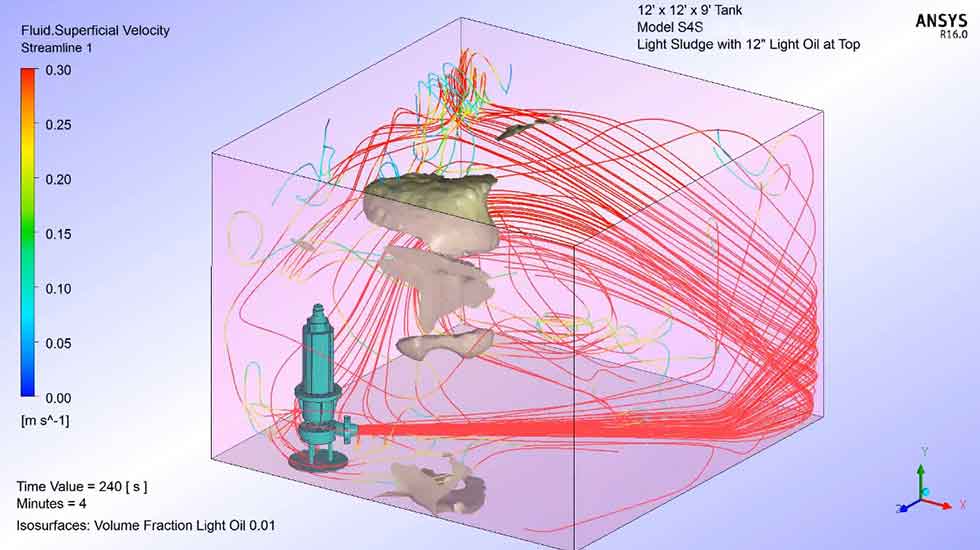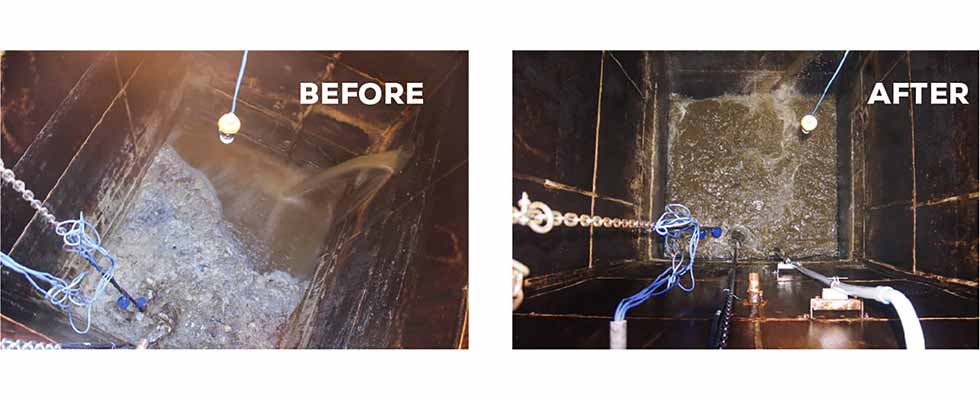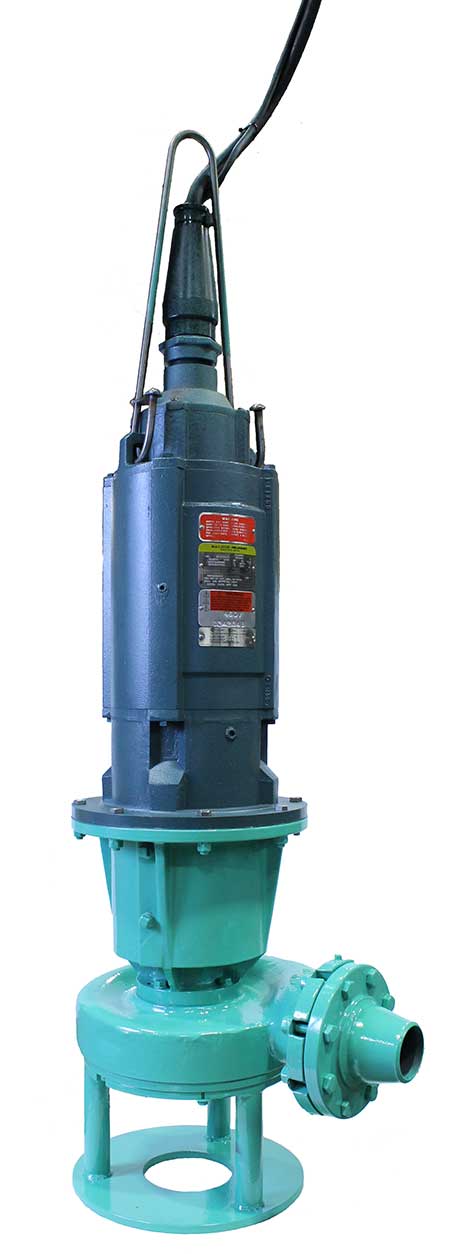
Today’s wastewater industry professionals are combating various issues, but none may be as prevalent as the “new sewage.” New sewage is the increased content of nonflushable wipes and grease that wreak havoc on existing sewage treatment plants and lift stations.
Rags and grease are not new to the wastewater world, but the issues they cause are exacerbated when coupled with low water use. When coupling the decreased amount of water use with the higher solids content of nonflushable wipes and grease, it makes for the perfect storm for traditional nonclog lift station pumps and for the lift station itself. The result is floating grease and scum layers, settling solids, greater maintenance frequency of clogging pumps and high station cleaning costs. All of these issues cause elevated operating costs and greater potential for maintenance personnel safety issues.
Maintenance staff unclogging a pump and cleaning a station with a vacuum truck is a reactive approach to a problem that has a proactive solution available. Many times the act of unclogging a pump, or cleaning a station, has become part of normal station maintenance and is not considered unusual. However, municipalities do not need to be saddled with the expense of regularly unclogging their nonclog pumps.

When breaking down the costs of unclogging a pump, one can see how expensive a clogged pump becomes over time. Municipalities generally require two end users to unclog a pump at a lift station, so when reviewing the cost of the time spent unclogging the pumps, it is easy to see how much money is spent. If it takes two people four hours a week (during regular work hours) to unclog one pump at a given lift station and their wage is $25 per person per hour, the cost of unclogging just that pump is over $10,000 per year in wages alone. The cost of cleaning floating layers of scum or settled solids and debris in a lift station with a vacuum truck can be as little as approximately $500 per cleaning, or it could be more than $100,000 per cleaning depending on the size of the station and the local rates of service.
The proactive solution to these issues can be a conditioning chopper pump. A conditioning chopper pump is a submersible chopper on a portable stand with a high velocity mixing nozzle. These units are designed to be placed at the bottom of a lift station sump and run intermittently, or continually, as required to homogenize the contents of the tank so they can easily be pumped out by existing nonclog dewatering pumps.

This is an engineered solution that requires details of the pit dimensions, retention time of the wastewater in the tank, and information regarding both floating and settled solids in order to provide the best solution for the specific application.
The best way to make sure that pump sizing and nozzle configuration is correct for the application is through computational fluid dynamics (CFD) simulation software that provides a basis for nozzle aiming and pump positioning in the pit.
Every lift station has its own set of problems, and each needs to be treated individually in order to solve the issues at that station. These issues generally tend to break down into three major categories: floating solids, settled solids or both. If the existing nonclog dewatering pumps cannot be replaced with chopper pumps due to budget constraints, or other reasons, then the addition of a conditioning chopper pump can help in preventing clogging of the existing pumps due to the issues outlined above.
The chopper pump breaks down the rags and other inorganic material to help prevent clogging of the nonclog dewatering pumps. The mixing nozzle directs mixing flow to the top of the pit to break up floating layers, or to the bottom of the pit to stir up solids that have settled over time. In addition, the entire pit is homogenized, which prevents clogging of the dewatering pumps and promotes a consistent metering of solids to the treatment plant.

By making the conditioning chopper pump portable, a single pump can be used at multiple lift stations. Control panels can be installed at each lift station with quick disconnects to allow for easy plug and play on-site.
The end user can also use a portable generator for power at these sites if needed for quick cleanings.
The conditioning chopper pump can be fitted with a hydraulic motor so that a hydraulic power pack can be used to power the pumps. Various nozzle arrangements can be supplied for one conditioning chopper pump in order to address different issues at different lift stations.
When applied correctly, a conditioning chopper pump can reduce maintenance costs and increase the time between station cleanings, allowing maintenance staffs to focus on other pressing issues.
Reduced station maintenance has the upside of also keeping maintenance personnel safe by not having them in confined spaces, or dealing with sewage directly, because of a clogged pump.
When choosing an OEM, it is important to note that not all chopper pumps are created equal. Innovation, experience and references are all important items to discuss when searching for a competent manufacturer of these pumps.

